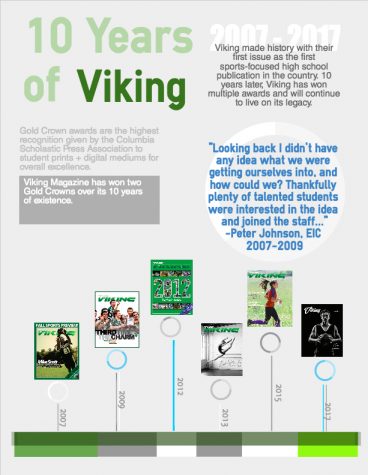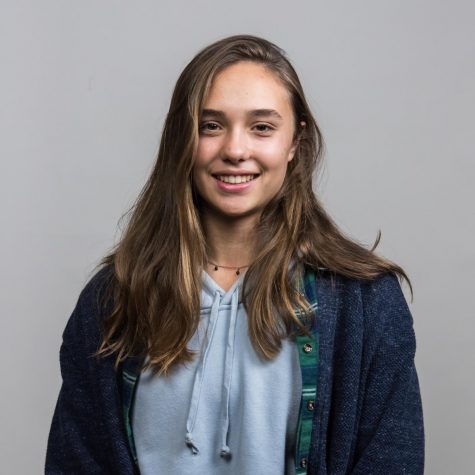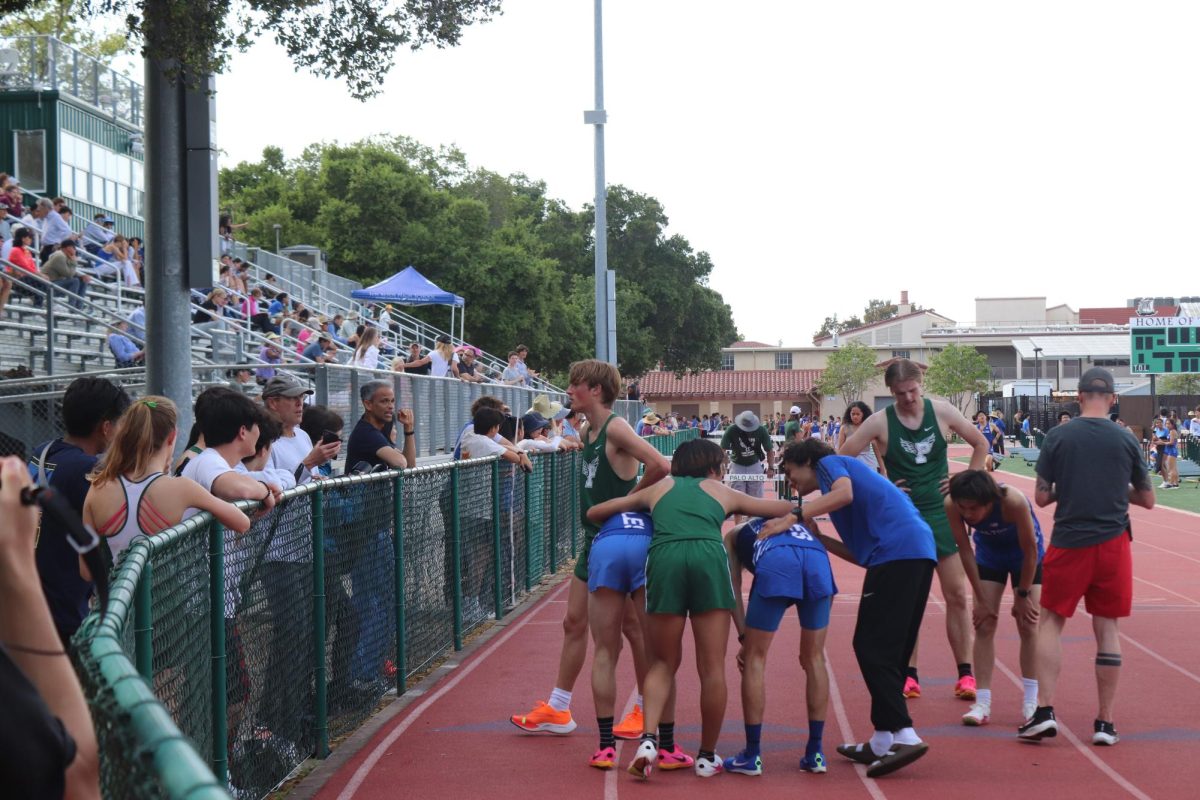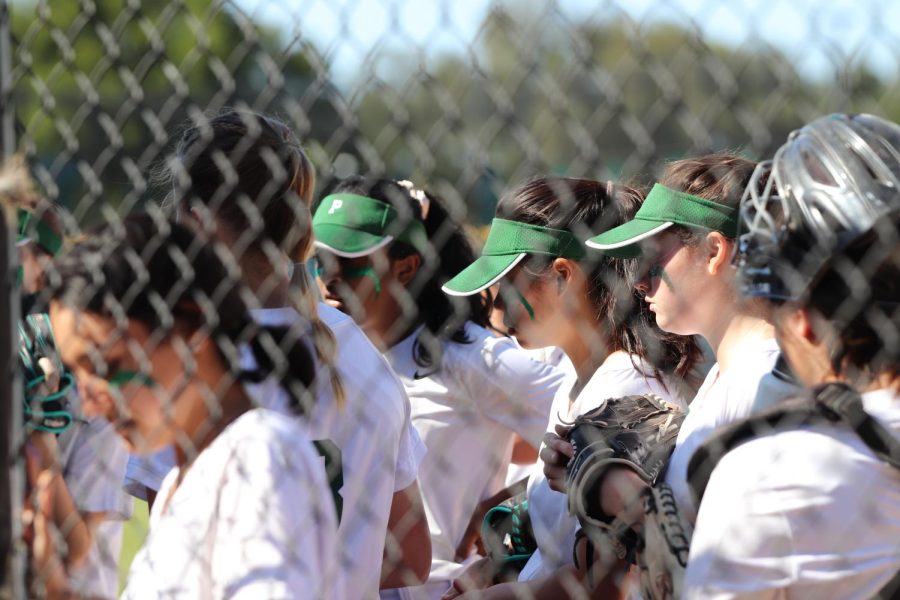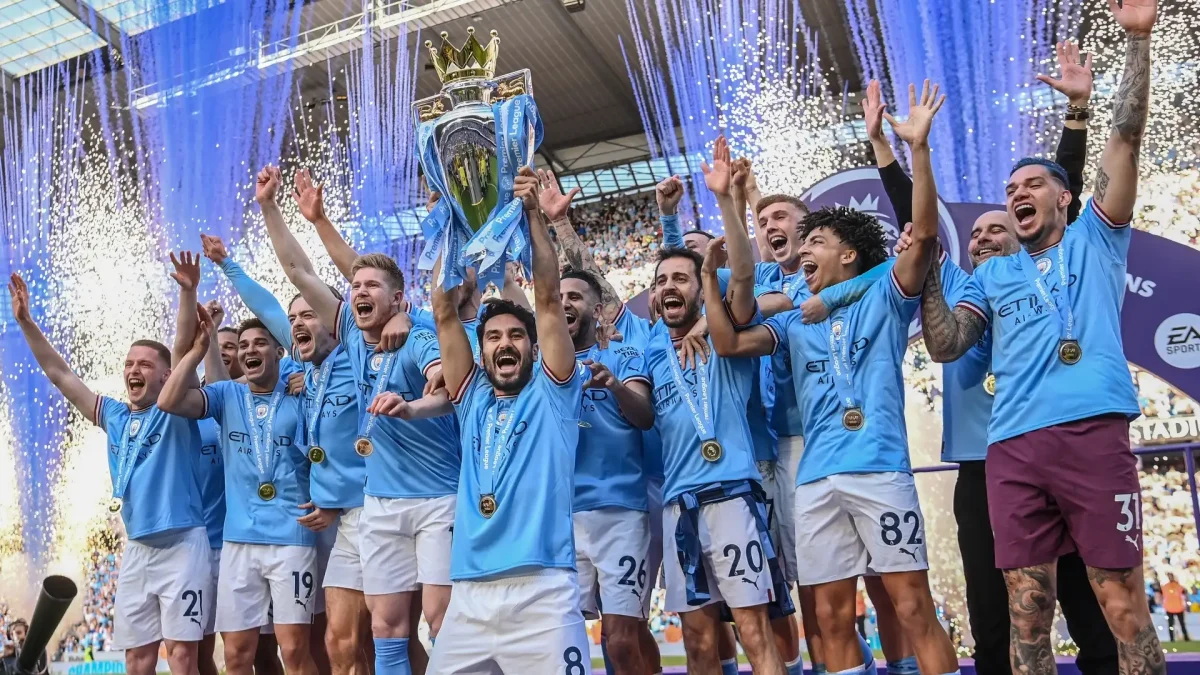10 Years of Viking
December 18, 2017
Current staff Yue and Maria contacted several of the Viking magazine creators and original editors. Here is a snippet of their responses to questions about their experience and how it shaped their careers. We interviewed Peter Johnson, Nina Gertsvolf, Noah Sneider, and Charlie Avis, who all graduated in 2009.
Q: What sports were you involved in at Paly?
A: (Charlie:) I ran XC all four years, played baseball freshman and sophomore year, then ran track junior year.
(Peter:) I played soccer all four years.
(Noah:) I ran cross country and track. Decently, I might add.
(Nina:) I played on the tennis team at Paly for three years, ran track for four.
Q: Who’s idea was it? Did you guys know what you were getting yourself into?
A: (Charlie:) Noah, Peter and I came up with the idea together I think. The details are fuzzy now, but I have a distinct memory of being at baseball practice with Noah, outside the old batting cages, throwing ideas around and getting each other psyched. I also know that we capitalized on a rumor that Woj wanted to expand the journalism department.
(Peter:) I remember it being Charlie’s during our (Noah, Charlie and my) sophomore years, and mostly in jest — that we should start a sports magazine to basically be a Sports Illustrated for Paly. I think the draw for us was we were all interested in journalism but not crazy about getting involved in the seriousness and legacy politics of the Campanile. Woj got wind of our idea and started really encouraging us to take it seriously and go for it. She got the school to give us an advisor, a classroom, and the resources we needed. Looking back I didn’t have any idea what we were getting ourselves into, and how could we? Thankfully plenty of talented students were interested in the idea and joined the staff, including Austin and Nina who were the senior editors. Austin’s claim to fame was the Last Word column, which was legendary and hilarious. Nina’s grammar and sentence structure expertise was a big asset.
(Noah:) My memory of the origin story is pretty close to what Peter and Charlie already said. We all wanted to continue in journalism, but weren’t especially attracted by the existing options. Woj had been talking about wanting to expand the program, and we liked the idea of starting our own thing. Also worth recalling that it was a particularly exciting time for Paly sports, with multiple state championship level teams and individual athletes competing at the Olympic or national level. It felt like Paly was emerging as a sporting powerhouse, capped off with the Jeremy Lin-led state championship basketball team. People at school and in the Palo Alto community were constantly talking about Paly sports. So it seemed somehow natural that there ought to be a publication dedicated to it.
Click to expand.
Q: What were the most challenging parts of getting it launched?
A:(Nina:) There were a lot of little logistical and technical challenges, from building a production process, to securing funding, to learning how to send files to the printer (harder than it sounds!)… But I think the biggest challenge had to do with bringing our vision of the magazine to life. It was really important to me that The Viking be seen as a serious publication, not just an outlet for a bunch of athlete friends to flatter each other with cool pictures, nice articles, and write-ups of the latest games. The idea was to examine our community and our society through the particular lens of sports. We wanted to use sports as a window onto what it was like to be a student at Paly. That meant pushing ourselves and our staff to come up with big ideas, pushing our teachers to let us tackle complex and controversial subjects, and maintaining a set of journalistic standards that would earn the respect of our readers.
(Charlie:) Personally, for me there was a super steep learning curve to journalism. Peter and Noah were really into journalism, and so the whole idea was maybe less foreign to them, but it was challenging and fun for me to figure out how everything was gonna work, and then find ways to be most productive. I think our first production week was a real grind. I remember Noah and Peter and I working really late in the basement of my house putting together the final copy. The logo, the cover, the layout – it all just came together in this really cool way while we were scrambling to collect all the pieces and ship it out to the printer.
(Noah:) There were a lot of little logistical and technical challenges, from building a production process, to securing funding, to learning how to send files to the printer (harder than it sounds!)… But I think the biggest challenge had to do with bringing our vision of the magazine to life. It was really important to me that The Viking be seen as a serious publication, not just an outlet for a bunch of athlete friends to flatter each other with cool pictures, nice articles, and write-ups of the latest games. The idea was to examine our community and our society through the particular lens of sports. We wanted to use sports as a window onto what it was like to be a student at Paly. That meant pushing ourselves and our staff to come up with big ideas, pushing our teachers to let us tackle complex and controversial subjects, and maintaining a set of journalistic standards that would earn the respect of our readers.
(Peter:) We were working from complete scratch and so we had to think about basic format stuff like fonts, layouts, consistency, sections, ads, etc — things you didn’t learn in beginning journalism class. Personally, another challenge was getting thrust into an authority position from day 1 as a junior and dealing with the frustrating aspects of that. Coming up with stories and writing the content was probably the easiest part!
(Austin:) I think I would echo Noah’s response. Nobody took the magazine seriously at first and so I think we were incredibly motivated to produce high quality journalism that would break beyond the normal beat reporting. Crafting those centerfold investigative articles was obviously the highest stakes work we did, but I think that came with a certain reward. I mean I assume it did. I mostly wrote silly blog pieces.
Q: Any important lessons from the Viking Magazine experience that you took with you into your post-Paly career?
A:(Austin:) That was the first time in my life that I had taken on a challenge that large, with incredible partners in crime, and completed something I was really proud of. I think I learned more from the struggles and growing pains of The Viking than I did from any other class or extracurricular activity I came across at Paly. The main takeaway was this: when you decide to do something, throw yourself into it fully, and work until you’ve achieved something you’re proud to call your own. If I hadn’t learned that I definitely never would’ve found myself living in Manila for a year.
(Peter:) The lessons inherent in working with a big group in a volatile environment to put out a singular product (#journalism) — the teamwork, communication, working through staff issues, holding each other accountable, compromising, etc — those were most valuable. As a journalist today, the writing and interviewing practice was also important. It’s interesting how the landscape of media has totally changed since 2009 and the curriculum and expectations are probably way different now, but I think the fundamental lessons to be learned from the experience are probably about the same.
(Nina:) Learning to work in a team to develop a quality product while under a time crunch was truly a valuable experience. Medicine is a team sport as well, and I have found that working with the other doctors, nurses, and therapists to care for patients requires the same communication, cooperation, and organization skills that we developed while working on the Viking Magazine staff.
(Charlie:) Firstly, I really loved the layout and visual design aspects, and this was my first exposure to that, and I built skills, that translated directly to work at architecture school and to the work I do as a designer/engineer now. It also was a great learning experience for working with really close friends and classmates (greatly rewarding, sometimes frustrating).



